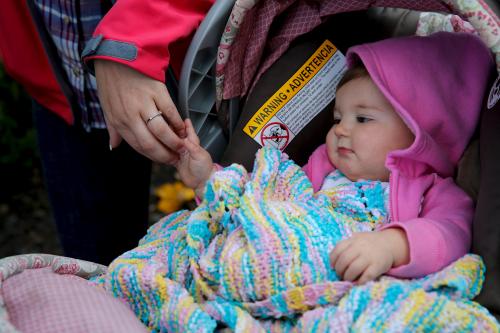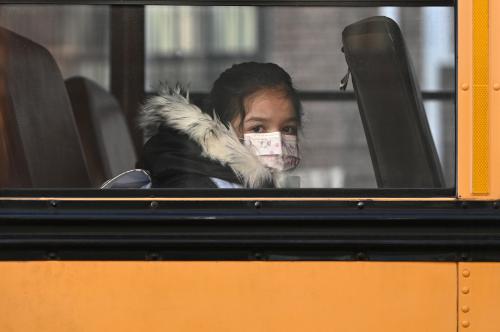This article originally appeared in Real Clear Markets on February 5, 2018.
On February 5, 2018, the Family and Medical Leave Act (FMLA) celebrates its 25th anniversary. As the first (and still only) piece of federal legislation enabling workers to care for a new child, an ill family member, or a serious personal illness without jeopardizing their employment, it was a critical first step. However, the FMLA only provides workers with up to 12 weeks of unpaid leave for these purposes, and it only applies to those in firms with 50 or more employees. Many experts on both sides of the political spectrum have advocated for a federal paid leave policy that would enable workers to meet the oft-competing demands of work and family. Paid family leave even received a brief nod in President Trump’s first State of the Union speech. While a national paid leave policy has much to recommend it, we should be clear that it does not normally cover very short periods of absence from work when someone is sick with, say, a cold or the flu. So, in addition to giving consideration to paid leave in cases of serious illnesses, such as cancer, more attention should be directed to the need for sick leave. According to the BLS National Compensation Survey, around 72 percent of workers receive paid sick leave, primarily through their employer’s voluntarily-provided benefits. However, this ranges substantially by worker and firm characteristic – less than one-third of workers in the bottom wage decile receive paid sick leave, compared to over 90 percent in the highest decile. Food preparation (19 percent) and personal care and service (25 percent) workers are far less likely than those in, say, computer and mathematical occupations (88 percent), to have access to paid sick days.
Access to paid sick leave decreases the probability of job separation, and making coverage universal could substantially reduce medical costs, particularly those paid by public health insurance programs. Workers who do not receive paid sick days are more likely to go to work or send their children to school sick, increasing the risk of contagions in workplaces and schools. In a year plagued by the worst flu season since the 2009 swine flu pandemic, universal paid sick leave could help minimize rates of infection in places in which coverage is not already mandated. While causation is notoriously tricky to tease out, flu rates decreased significantly when workers gain access to paid sick leave through state- or city-level employer mandates, according to some research. But, only nine states have passed paid sick leave laws, alongside 30 cities and two counties. Unlike paid family and medical leave, such laws most frequently take the form of employer mandates. Given that falling ill is unpredictable and often requires only a very short leave of absence from work, it doesn’t make sense for the government to administer short-term sick leave in the same way as longer periods of paid leave taken to care for a newborn or a seriously ill family member. Rather, a federal policy might resemble the paid sick leave benefits voluntarily offered by many employers already – an accrued benefit based on a worker’s tenure with a given employer. One such proposal, the Healthy Families Act, sponsored by Rep. DeLauro (D-CT), would allow workers in firms with 15 or more employees to earn a minimum of one hour of paid sick time for every 30 hours worked, up to a total of seven days per year. Smaller firms would be required to offer unpaid sick leave, and firms would be free to go beyond these benefits if they desire. The evidence to date suggests that the costs to employers of offering paid sick leave are relatively low. Of workers with access to paid sick days, 45 percent reported not using any in the previous year. Of those who used the benefit, the average (mean) benefit used was 2.1 days. A study of San Francisco following the implementation of its paid sick leave ordinance found that more than one-quarter of all workers with access to paid sick days did not use any in the last year. Instead of abusing these benefits, workers appear to be using paid sick leave for its intended purpose. While the proliferation of state and local laws means that more low-wage workers receive paid sick leave in certain areas, it also means increasing inconsistency across jurisdictions. Some employers have expressed concern over the growing complexity of the unintegrated paid leave landscape, advocating for a federal law that would pre-empt local authority if firms met voluntary minimum paid leave standard and at least one flexible work arrangement. Because the standard is voluntary, there is no incentive for employers to roll out new paid leave benefits in places in which no local mandate exists, so the law is unlikely to meaningfully expand access to workers who don’t already have these benefits. And by exempting participating firms from state and local laws, the bill could even encourage some firms to roll back existing benefits. A better alternative would be to establish a federal paid sick leave mandate in which all employees could accrue time off to recover from their own temporary illnesses based on their tenure with an employer. Indeed, a survey conducted by NORC and the University of Chicago found that 86 percent of the public supported a law that would give workers up to seven paid sick days to care for one’s self or immediate family member, with majorities of both strong Democrats and strong Republicans favoring the proposal. A quarter century ago, the FMLA reflected an important legislative victory for America’s workers, and many advocates have since pushed for paid family and medical leave at the federal level. A federal paid sick leave mandate would complement these efforts by enabling all workers the ability to stay home for a day or two when they fall ill.




Commentary
Op-edThe flu is awful, a lack of paid sick leave is worse
February 5, 2018